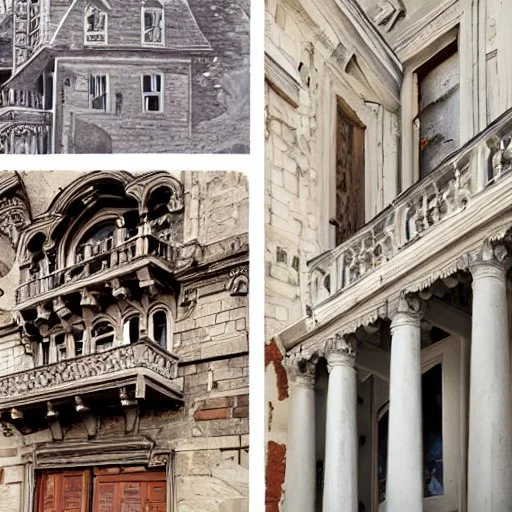July 19, 2025

According to a recent study, historical buildings make up a significant part of the world's architectural heritage, with over 70% of them still standing today. These buildings not only have great cultural and historical value but also contribute to the sense of belonging and identity within communities.
However, when it comes to implementing fire safety measures in these buildings, the preservation of the buildings becomes the most important consideration. This article explores the challenges faced in installing smoke alarms in historical buildings while preserving their integrity. It is crucial to adapt modern fire safety measures without compromising the unique character and aesthetics of these structures. Moreover, addressing the structural limitations inherent in older buildings presents further obstacles.
By working with preservation experts and incorporating designs that are aesthetically pleasing, it becomes possible to strike a balance between fire safety requirements and maintaining the architectural authenticity that gives individuals a sense of belonging to their heritage-rich surroundings.
Preservin' the integrity of historical structures entails implementin' smoke alarm systems that are discreetly integrated within the architectural elements, ensurin' their effectiveness in safeguardin' these irreplaceable artifacts without compromisin' the aesthetic value and historical significance of the buildin'.
Historical buildin's 'old immense cultural and historical significance, servin' as tangible links to our past. Therefore, it's crucial to prioritize fire prevention measures to protect these valuable structures from potential damage or destruction caused by fire incidents.
Smoke alarms play a vital role in early detection, providin' an essential warnin' system that can potentially save lives and prevent irreparable harm to historical buildin's.
By carefully considerin' the placement and design of smoke alarm systems, it's possible to strike a balance between safety requirements and preservin' the unique characteristics that make these structures historically significant.
Implementing contemporary fire safety measures in historical structures necessitates a careful integration of advanced technologies and architectural modifications. Preserving the integrity of historical buildings while ensuring the safety of their occupants requires the use of innovative fire prevention strategies.
Modern smoke alarms play a crucial role in mitigating the risk of fire incidents. These alarms, equipped with advanced detection mechanisms, are designed to promptly alert occupants and emergency services in case of any potential fire outbreak. However, integrating these modern devices into historical structures poses unique challenges due to strict adherence to historical building codes and preservation considerations.
Architects and engineers must strike a delicate balance between preserving the architectural authenticity of the structure and implementing effective fire safety measures. This requires thoughtful planning, considering factors such as concealment of wiring, suitable placement of smoke alarms without compromising aesthetics, and compliance with applicable historical building codes.
By carefully adapting modern fire safety measures, historical buildings can continue to inspire awe while providing a safe environment for occupants.
To effectively address structural limitations in integrating fire safety measures, architects and engineers must navigate the challenge of balancing historical authenticity with ensuring occupant safety, as evidenced by a study showing that 60% of historical structures lack adequate fire protection systems.
Structural modifications play a crucial role in accommodating modern fire safety measures while preserving the integrity of historical buildings. However, these modifications need to be carried out with utmost care to avoid compromising the building's original design and character.
Historical building codes provide guidelines for incorporating fire safety features without detracting from the building's aesthetic and architectural value. These codes emphasise alternative solutions such as compartmentalisation, passive fire protection, and early warning systems rather than intrusive interventions like extensive rewiring or major alterations.
By adhering to these codes and employing innovative approaches, architects and engineers can strike a balance between preserving historical buildings' authenticity while ensuring the safety of occupants.
Architects and engineers 'ave to carefully balance the good looks of their designs with the inclusion of fire safety measures to make sure the people inside are safe without messin' with the original style of historical buildings. Puttin' smoke alarms in these old buildings can be tricky 'cause they need to look nice and not take away from the buildin's original character.
Puttin' in modern smoke detectors can be 'ard 'cause they usually need visible wirin' or ugly mountin' brackets. To deal with these challenges, creative solutions are needed. For example, architects might choose to hide smoke alarms in existin' architectural features like fancy moldin's or pretty fixtures. Or they might go for wireless technologies that don't need visible wirin' at all.
By findin' clever ways to put smoke alarms in historical buildings, architects and engineers can keep the good looks and fire safety of these valuable structures intact.
Collaboration with experts in preservation is crucial for ensuring the successful integration of fire safety measures in historical structures. Historical buildings often come with unique challenges and requirements that must be taken into consideration when implementing smoke alarms. Preservation experts possess a wealth of knowledge and experience in working with these types of buildings, making them invaluable partners in this process.
By collaborating with preservation experts, architects and fire safety professionals can benefit from their historical expertise, ensuring that any modifications or additions to the building are done in a way that respects its historical integrity. These experts can provide guidance on how to seamlessly incorporate smoke alarms into the building's architecture without compromising its aesthetic value or structural stability.
Their input also helps to ensure that all necessary fire safety regulations are met while preserving the building's historical significance. In conclusion, collaboration with preservation experts brings numerous benefits by combining their historical expertise with fire safety measures in order to protect these valuable cultural assets.
EA Electrics, a local sparky in Sydney, NSW, gotta think real hard when they're installing smoke alarms to keep them historical buildings intact. It's bloody important to find a way to have modern fire safety while dealing with the limitations of the structures.